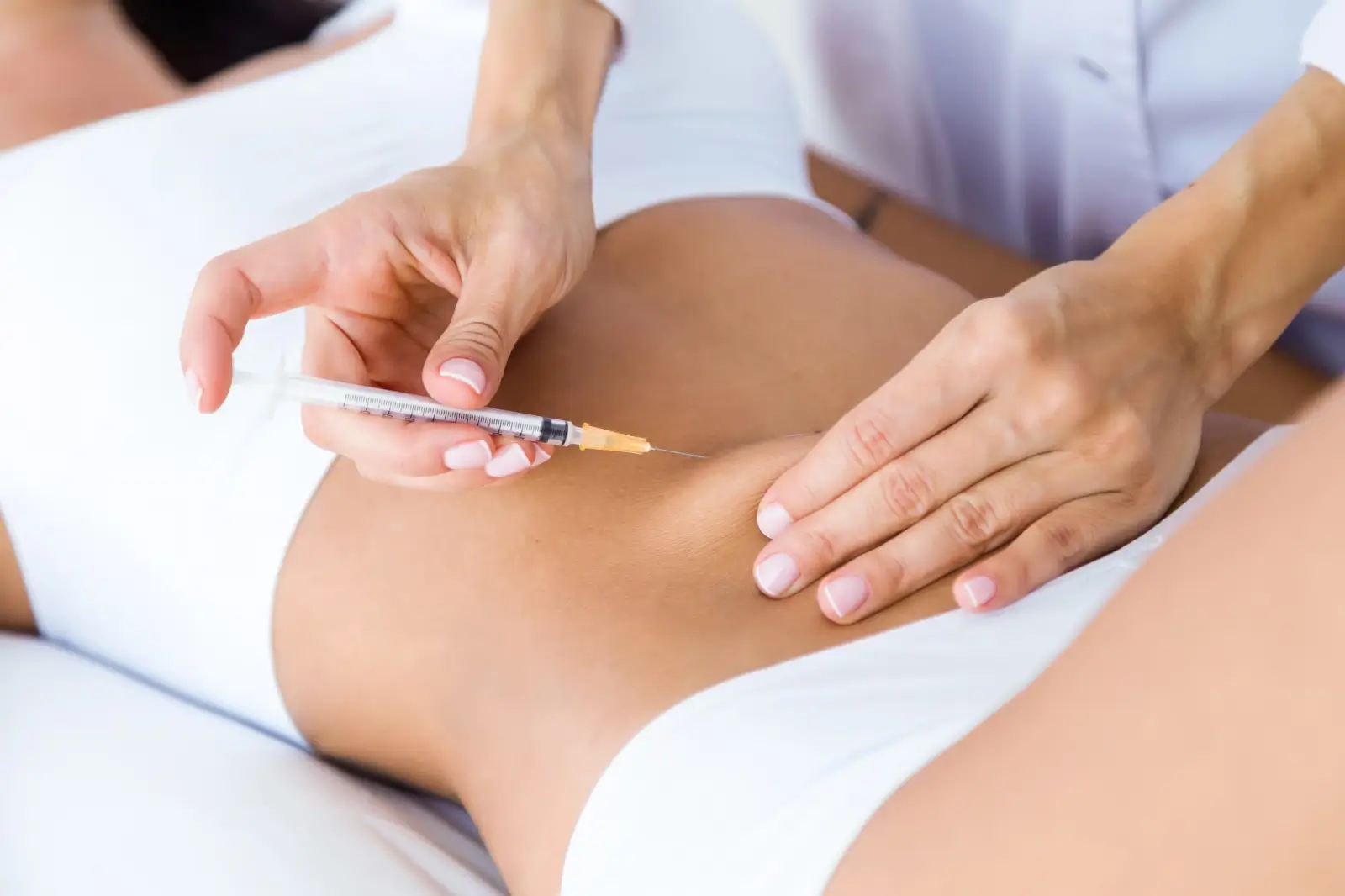Only for Licensed Professionals
Only for Licensed Professionals
.webp)
Aqualyx Instructions – Step-by-Step Protocol
Nina Petrovic
Last Updated On: April 30, 2025
Studies have emphasized the critical role of patient assessments in aesthetic procedures, highlighting that thorough evaluations—including screening for body dysmorphic disorder (BDD)—are essential for ensuring safe, ethical, and satisfactory outcomes.
Building on this foundation of clinical diligence, Aqualyx has gained recognition as a non-surgical solution for reducing localized fat deposits. However, its effectiveness hinges not just on the product itself but on the precision and care with which it is administered, from the initial consultation to post-treatment care.
This article outlines a step-by-step protocol for Aqualyx administration, guiding practitioners through every essential phase—from patient evaluation to aftercare—to ensure safe delivery and consistent aesthetic results.
Key Takeaways
- A complete medical history, fat layer analysis, and realistic goal-setting are critical to determine if Aqualyx is suitable for the patient.
- Before starting therapy, patients should be fully aware of the treatment goals, number of sessions, expected outcomes, and potential risks.
- Aqualyx must be gently mixed and injected using precise methods such as fan or grid patterns, with dosing tailored to each treatment area.
- Cold compresses, limited activity, and clear instructions help reduce swelling and discomfort. Follow-ups ensure progress and guide future treatments.
- Nodules, asymmetry, or inflammation should be addressed with massage, enzyme creams, or dose adjustments between sessions.
About: Operating since 2016, Med Supply Solutions is known for being one of the industry’s top and trusted suppliers of cosmetic and viscosupplementation products. Contact our sales department for more information about buying Aqualyx online.

Patient Assessment and Consent

The first step in the Aqualyx protocol is a comprehensive patient consultation. Clinicians should carefully evaluate the patient’s medical history to rule out contraindications such as pregnancy, liver or kidney dysfunction, autoimmune disorders, or allergies to components of the Aqualyx solution. It’s equally vital to assess psychological readiness by screening for unrealistic expectations or underlying conditions such as body dysmorphic disorder (BDD).
Discussing body contouring goals and setting realistic expectations ensures patient satisfaction. This includes outlining how many sessions may be required, expected reduction per session, and potential side effects. Prior to treatment, practitioners must obtain written informed consent after explaining the benefits, risks, and limitations of Aqualyx.
To determine suitability, use diagnostic tools such as fat calipers, ultrasound, or tactile examination to measure fat layer thickness. Proper patient selection significantly reduces adverse effects and dissatisfaction.
Preparation and Injection Procedure

Effective treatment begins with proper preparation to minimize risk and optimize results. Aqualyx instructions recommend the following:
- Disinfect and mark the treatment area in advance.
- Apply a topical anesthetic or mix the solution with lidocaine for enhanced comfort.
- Use fine-gauge cannulas (25G–27G) to inject the solution into the subcutaneous fat layer using fan or crosshatch techniques, depending on the area.
Each 8 mL vial of Aqualyx typically treats 1–2 localized areas. Start with 1–2 vials per session, depending on patient size and fat volume. Over-injection must be avoided, as it may lead to swelling or nodularity. Shake the vial gently before use, but avoid aggressive agitation, which may affect solution stability.
Practitioners should also review Aqualyx’s FDA approval status when informing patients about its regional regulatory standing, especially in countries like the U.S., where it has not yet received formal approval.
Post-Treatment Care and Monitoring
Post-procedure care is crucial for patient safety, comfort, and optimal results. Immediately following injection, apply cold compresses to reduce swelling and inflammation. Patients should avoid:
- Strenuous activity
- Hot showers or saunas
- Alcohol consumption for at least 24–48 hours post-treatment
Mild redness, swelling, bruising, or tenderness is common and should subside within a few days. Patients should report any of the following:
- Signs of infection
- Persistent pain or hard nodules
- Allergic reactions or difficulty breathing
Provide patients with written aftercare instructions, and schedule a follow-up appointment within 3–4 weeks to assess treatment response and discuss the next session, if needed. Practitioners should update photos and clinical notes at each visit.
Handling Complications and Follow-Up
Though rare, complications can occur and should be managed promptly:
- Asymmetry or Uneven Reduction: Massage and subsequent corrections can help.
- Persistent Nodules or Inflammation: Often resolve with gentle massage or topical enzymatic creams.
- Allergic Responses or Unexpected Pain: May require intervention with corticosteroids or antihistamines.
Follow these best practices to minimize risks:
- Maintain at least 3–4 weeks between sessions
- Adjust dosage and technique based on previous response
- Keep emergency medication on hand during all procedures
Regular follow-ups also give the practitioner time to evaluate changes in fat distribution and adjust the treatment plan accordingly for optimal long-term results.
Conclusion
Administering Aqualyx requires more than just technical skill—it demands a protocol-driven, patient-centered approach that spans from pre-assessment to post-care. When clinicians follow standardized Aqualyx instructions, ensure accurate dosing, and maintain open communication, outcomes are typically both safe and satisfying.
Staying updated on developments such as regulatory guidelines and clinical best practices empowers practitioners to provide non-surgical fat reduction treatments confidently and responsibly.
FAQs
1. How many Aqualyx sessions will I most likely need?
For noticeable results, most patients require 2–5 sessions spaced 3–4 weeks apart. The number depends on the fat volume and treatment area.
2. Can I exercise after an Aqualyx treatment?
It’s best to avoid exercise, alcohol, and heat exposure for at least 24–48 hours post-treatment to reduce swelling and bruising.
3. Is Aqualyx safe for everyone?
No. Aqualyx is not recommended for pregnant or breastfeeding women, individuals with severe liver or kidney disease, or those allergic to any ingredients.
4. What areas can Aqualyx target?
Aqualyx is designed for localized fat reduction and is commonly used on the chin, abdomen, thighs, flanks, knees, and buttocks. It is not a treatment for overall weight loss.
5. What are the common side effects?
Mild side effects include swelling, redness, bruising, tenderness, numbness, or itching at the injection site. These usually resolve within a few days to a week. More serious complications are rare but possible.
6. How long does an Aqualyx session take?
Each session typically lasts 30–60 minutes, including preparation, injections, and aftercare.
References
Phillips K. Body Dysmorphic Disorder: Advances in research and clinical practice. OUP Academic. Published online June 1, 2017. doi:10.1093/med/9780190254131.001.0001
Amore R, Pinto H, Gritzalas K, et al. Intralipotherapy, the State of the Art. Plast Reconstr Surg Glob Open. 2016;4(10):e1085. Published 2016 Oct 27. doi:10.1097/GOX.0000000000001085
Products
Cart
Log In
Newsletter
Subscribe for exclusive offers and updates on new arrivals
Share feedback at:
Working Hours
MON - SUN 9AM to 6PM EST
The Most Popular Brands
Med Supply Solutions
Support
Secure checkout is guaranteed with full adherence to PCI DSS payment standards.
Products listed here are guaranteed authentic and manufacturer-sourced.
Pay easily with trusted providers


*Google and Apple Pay are currently only available via a direct link provided by your account manager.
Copyright 2025. Med Supply Solutions